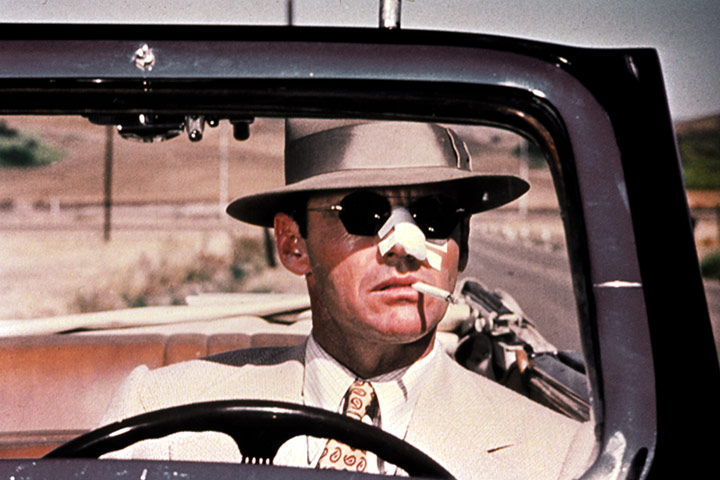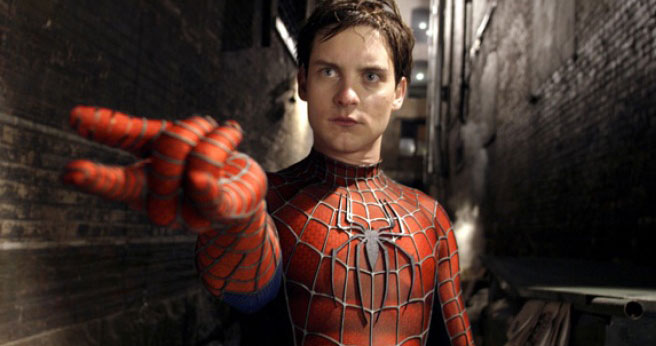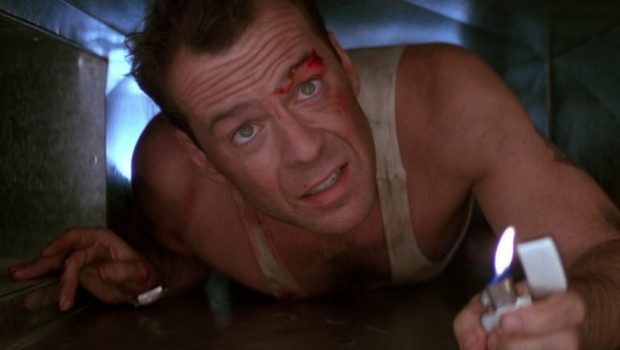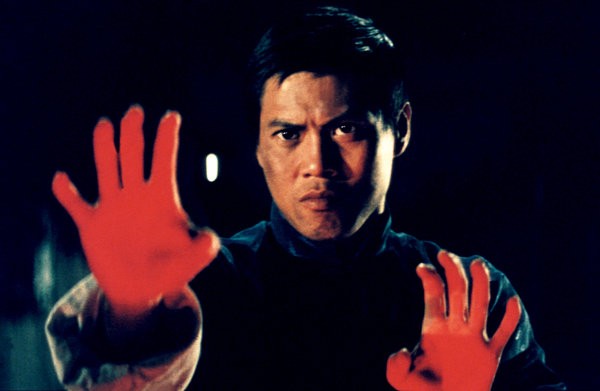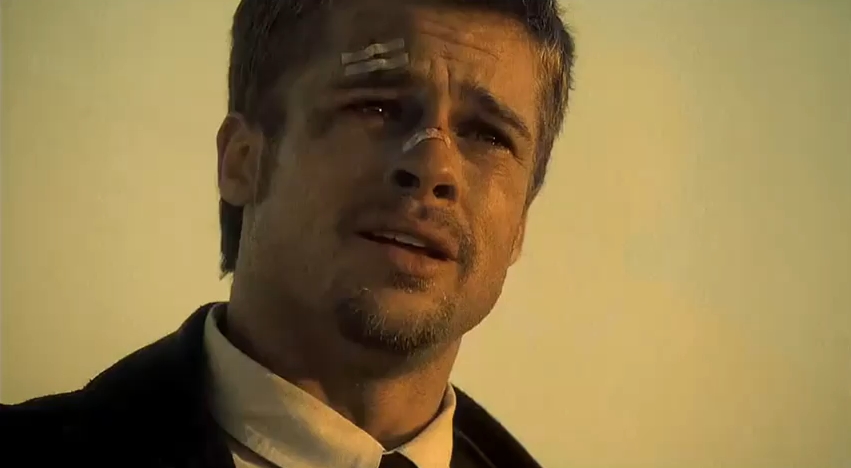6. Chinatown
Perhaps the way in which Roman Polanski’s film reinvented the noir genre to create neo noir is simply by demonstrating how well its themes still applied to modern cinema. Often regarded as one of the finest in cinema history, the screenplay of Chinatown accepts conventions and traditions without resorting to objecting to them or mocking them.
But at the same time it plays against them when it needs to for the sake of the story, or for its own artistic merit. Just look at how Jake Gittes’ nasal injury is not simply brushed off, he sports a bandage for the rest of the film as a mark of his own vulnerability and human nature.
Another way in which it defies convention is pointing out how cynical and unforgiving the world can be, emphasizing the fact that traditions and principles are virtually impossible to uphold in the world these characters populate. Contrary to simple premises that spiral out of control, Chinatown begins with a complex affair that leads to an impermeable and unquestionable resolution, whether we like it or not.
7. Spider Man
Superhero movies are dominating our current films schedule, and they are going to continue doing so for a long time yet. They have gone though many changes and developments, 1978’s Superman gave them a sense of grandeur and respectability, whereas Batman Begins would create a darker and grittier style.
But one theme that continues to this day and is considered essential is how we portray those superheroes. Beneath their extraordinary powers they are people that we can relate to and empathize with, and Sam Raimi’s Spider Man may have done that better than anything else before it.
It cracked how, at the heart of this story lies a teenage boy who is either blessed or cursed with these powers. Rather than allow Peter Parker to become the alter ego of Spider Man, it does just the opposite, Spider Man plays the supporting role to Peter Parker. It was also a triumph of charm and character over some fairly dubious special effects.
The superhero was now a real character with real emotions that broadened its appeal and made it more identifiable. It went to the heart of what the original comics were all about, regular human beings coping with small issues as well as big supervillains.
8. Die Hard
In some ways Die Hard reinvented the wheel simply by making a really good real. That may be a terrible metaphor but this is a brilliant film. Rather than struggling to make an overcomplicated plot with its villain planning to take over the world or initiate a global war its antagonist simply wants to carry out a perfect robbery, epitomized in the scene where Hans Gruber demands the release of several prisoners to the police, before privately informing his associate that he ‘read about them in TIME magazine’.
Furthermore the hero of Die Hard is not some invincible Adonis, John McClain does not go looking for trouble, nor does he revel in it. He picks broken glass out of his feet, reveals his insecurities concerning the state of his marriage and even some of his fears. The first piece of information we hear about him is that he is afraid of flying.
The idea of the audience connecting with McClain, hoping that he makes it out alive, counting every dead enemy and measuring every injury he sustains only makes the action more engaging and more spectacular.
9. Five Fingers of Death
An unusual entry on this list but one that is no less important for its genre. The martial arts genre was just taking off at the time of Five Fingers of Death’s release, and was about to his hyper popularity with Bruce Lee’s Enter the Dragon. Though that may be a more recognizable nomination it was down to the subversive success of smaller films in the genre that preceded it, most notably Five Fingers of Death.
It marked a shift in the tone of martial arts movies. Instead of focusing on elaborate, mythological and historical epics that involved swordplay and tradition, this film took a different approach. It relied on a modern day tradition and new stories, emphasized hand to hand combat and used more intricate shooting techniques to capture its close up action.
It played very well with American audiences and sparked an increasing demand that, coupled with the TV popularity of Bruce Lee in The Green Hornet, led to a craze that would sweep the American action scene.
10. Seven
Thriller is considered by some to be just a stone’s throw away from action. But Seven can silence those doubts as it is dark, disturbing and horrifying. Moving with an intelligent pace that thrillers from that era were lacking but have continually tried to incorporate today.
It also highlighted how crucial the look of a film is in order to set its mood, being dark and gloomy as opposed to high octane and hopeful, squandering almost all sense of optimism except where it is appropriate. These touches pointed out how a director can elevate source material to mean so much more than what it was intended as. David Fincher is still associated so heavily with this thriller because it really is his thriller.
Seven also remains unique in bringing its killer onto the screen at the halfway point. Even though he remains less of a mysterious enigma physically, John Doe his threatening nature does not diminish at any point. This is because you always get the sense that he is a man with a plan.
Rather than other serial killer dramas in which our antagonist acts impulsively Seven’s killer stays calm and collected, constantly giving the impression of a master scheme being at work here. That is undoubtedly, infinitely more gripping and terrifying.
